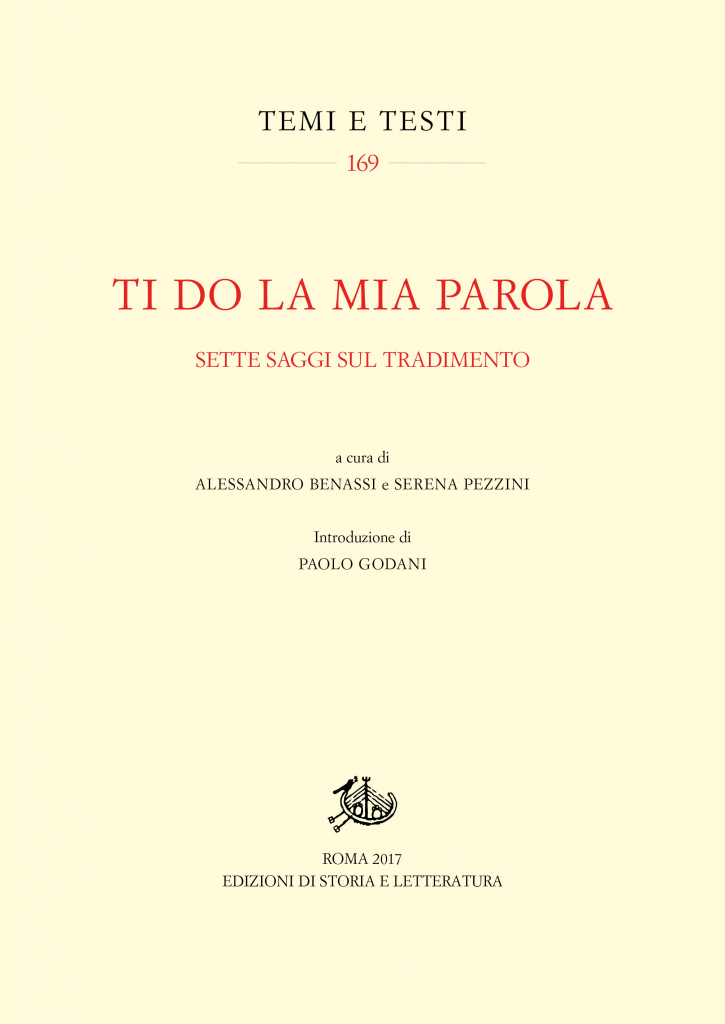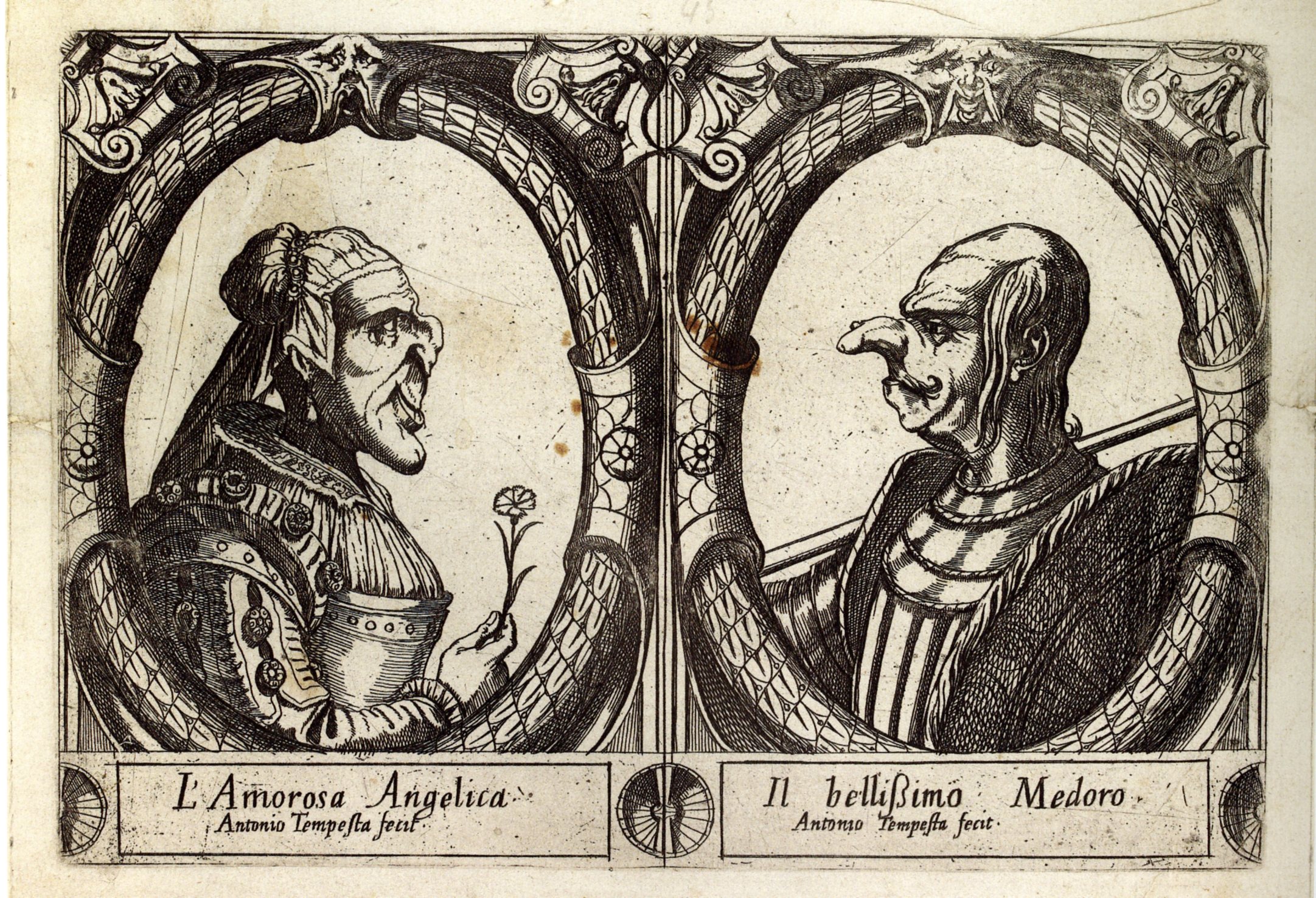It has been recently published the volume Ti do la mia parola. Sette saggi sul tradimento, edited by Alessandro Benassi and Serena Pezzini, with an introduction by Paolo Godani (Roma: Edizioni di Storia e Letteratura, 2017).


It has been recently published the volume Ti do la mia parola. Sette saggi sul tradimento, edited by Alessandro Benassi and Serena Pezzini, with an introduction by Paolo Godani (Roma: Edizioni di Storia e Letteratura, 2017).

In 1763 the Abbot Giuseppe Parini composes the poem Il Giorno, a satirical text addressing the inactive, lazy, superficial life of the aristocracy. Pretending to be an ode written in praise and for the education of a Young Gentleman, the poem harshly criticises the parasitic emptiness of noblemen and women. As a parody of a eulogy, Il Giorno deforms the classical poetic style, applying the language and rhetoric of epic and mythological tradition to the frivolous daily activities of the gentleman. The text provides a series of caricatures: first, the Young Lord is scared to death by the word “work”, and his hair stands on end (vv. 54-56):
Ma che? Tu inorridisci, e mostri in capo,
qual istrice pungente, irti i capegli
al suon di mie parole?
While reaching an outstanding complexity in the improvement of the human portrait, while exploring the perfection of the human body’s proportions and symmetries, Leonardo da Vinci sketches several experiments in deformation and exaggeration of the human figure.
Scholars refer to Leonardo’s deformations as proto-caricatures, because of their lack of explicit satirical aims. Indeed, Leonardo’s misshapen figures are entangled with his more general inquiry on the human subject, on the inherent shape, both physical and psychological, of the human individual. In this perspective, the caricature can be considered as the exploration of divergent possibilities of representation of humanness, and also a form of criticism against the canonization of the Renaissance portrait, that adopted idealized models screening off the observation of reality.
In the seventh canto of Ludovico Ariosto’s Orlando furioso (1532) Ruggiero arrives at the island of the sorceress Alcina. The sorceress encounters him on the threshold of her wonderful palace. She appears as the image of beauty itself. «Her person», Ariosto writes, «is as shapely and as fine / As painters at their most inspired can show», and her face presents a «perfect symmetry». The long description accurately depicts every detail of Alcina’s face and body. (OF, VII, 11-16):
Di persona era tanto ben formata,
quanto me’ finger san pittori industri;
con bionda chioma lunga ed annodata:
oro non è che più risplenda e lustri.
Spargeasi per la guancia delicata
misto color di rose e di ligustri;
di terso avorio era la fronte lieta,
che lo spazio finia con giusta meta.Sotto duo negri e sottilissimi archi
son duo negri occhi, anzi duo chiari soli,
pietosi a riguardare, a mover parchi;
intorno cui par ch’Amor scherzi e voli,
e ch’indi tutta la faretra scarchi
e che visibilmente i cori involi:
quindi il naso per mezzo il viso scende,
che non truova l’invidia ove l’emende.Sotto quel sta, quasi fra due vallette,
la bocca sparsa di natio cinabro;
quivi due filze son di perle elette,
che chiude ed apre un bello e dolce labro:
quindi escon le cortesi parolette
da render molle ogni cor rozzo e scabro;
quivi si forma quel suave riso,
ch’apre a sua posta in terra il paradiso.Bianca nieve è il bel collo, e ’l petto latte;
il collo è tondo, il petto colmo e largo:
due pome acerbe, e pur d’avorio fatte,
vengono e van come onda al primo margo,
quando piacevole aura il mar combatte.
Non potria l’altre parti veder Argo:
ben si può giudicar che corrisponde
a quel ch’appar di fuor quel che s’ascondeMostran le braccia sua misura giusta;
e la candida man spesso si vede
lunghetta alquanto e di larghezza angusta,
dove né nodo appar, né vena eccede.
Si vede al fin de la persona augusta
il breve, asciutto e ritondetto piede.
Gli angelici sembianti nati in cielo
non si ponno celar sotto alcun velo.Avea in ogni sua parte un laccio teso,
o parli o rida o canti o passo muova:
né maraviglia è se Ruggier n’è preso,
poi che tanto benigna se la truova.
Quel che di lei già avea dal mirto inteso,
com’è perfida e ria, poco gli giova;
ch’inganno o tradimento non gli è aviso
che possa star con sì soave riso.
At the beginning of the 17th century, the painter and engraver Antonio Tempesta realised a series of six caricatures inspired by the characters of Ludovico Ariosto’s Orlando furioso. Tempesta reveals the comic potential of Ariosto’s work by applying deformation not to the figures that Ariosto had already represented as comical, but to the characters which in the poem are examples of perfection and beauty. The visual interpretation both translates and extends the humoristic imagination entailed in Ariosto’s work.

A. Tempesta, L’amorosa Angelica e Il bellissimo Medoro, 16th/17th Century. Source: Wikimedia Commons, public domain.